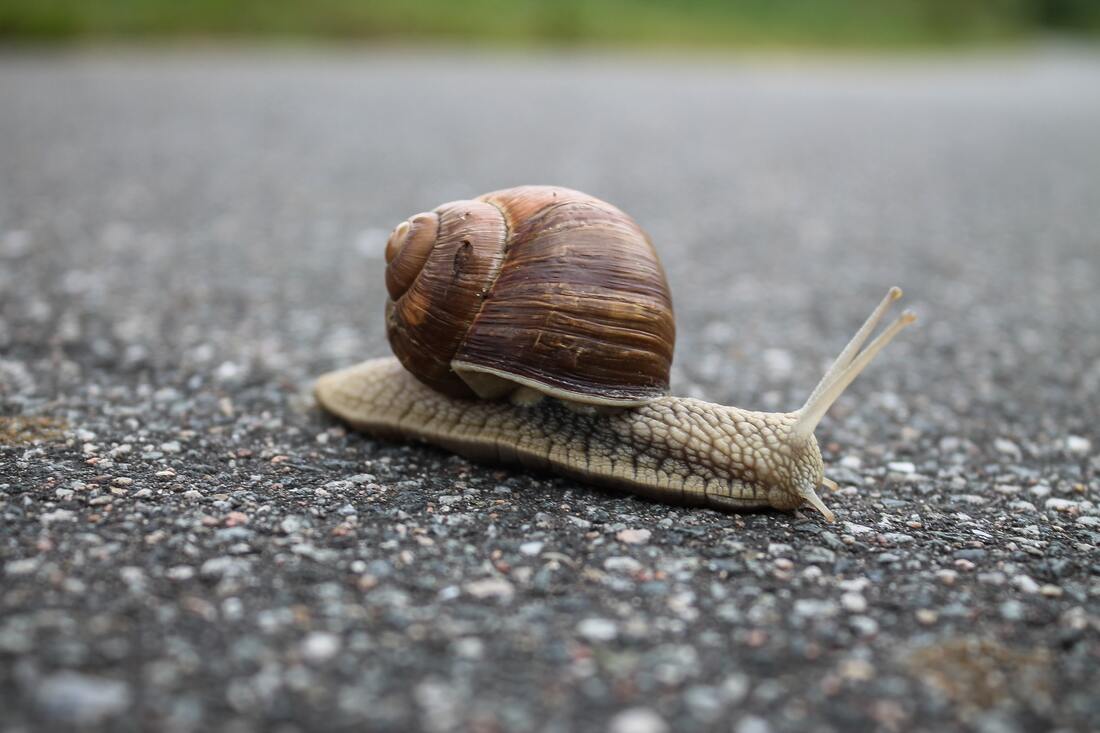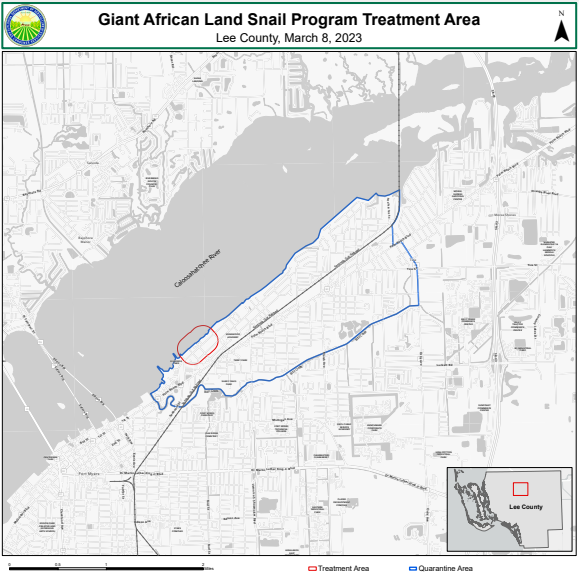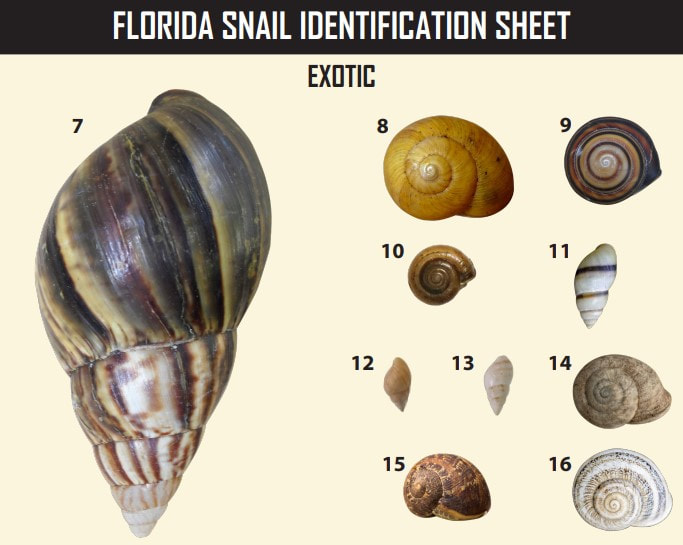|
*This article include details about parasites and medical conditions that may be unsettling for some readers; Reader discretion is advised." In December 2022, giant African land snails in Florida were unearthed in Lee County. Following further survey of the area, a county-wide quarantine has now been issued. Continued survey of the affected area resulted in the discovery of an increase in the number of snails found, both dead and alive, requiring the department to enact the quarantine issued via press release on March 16. The Florida Department of Agriculture and Consumer Services (FDACS) plan to continue using the same treatment methodology for the pest as it's been approved for residential use — a metaldehyde-based snail bait made specifically for eradicating Considered one of the most damaging snails in the world, the Giant African Land Snail consumes at least 500 different types of plants. According to officials with the FDACS, if left unchecked, these snails could be devastating for Florida agriculture and natural areas, as they cause extensive damage to tropical and subtropical environments. Under the quarantine, it is unlawful to move a Giant African Land Snail or any regulated article within, through, or out of the defined quarantine area. Regulated articles include, but are not limited to, plants and their parts, plants in soil, soil, yard waste, debris, compost and building materials. The quarantine area is in place starting at the inlet of Billy Creek on the Caloosahatchee River. The full area of effect can be found on the map below: These snails also pose a serious health risk to humans, carrying the deadly Angiostrongylus Cantonensis parasite, more commonly-known as the Rat Lungworm. The lungworm can cause meningitis in humans, as well as severe gastrointestinal and central nervous system diseasese depending on the species, according to the CDC. Most prevalent in Southeast Asia and tropical Pacific Islands, the CDC has noted an increase in distribution of the parasite over time, including in areas such as Africa, the Caribbean, and the United States. This isn't the first time Florida has dealt with the pest either; they've been an on-going threat since they were first detected in 1969. The species has already been eradicated twice in the Sunshine State — once in 1975, with the most recent eradication occurring in 2021 after their detection in Miami-Dade County. Prior to this recent detection, the last live snail in Florida was collected in Miami-Dade the December 2017. However, dead ones were found in Pasco County's New Port Richey area on June 23 of 2022, and was reported by a Pasco County Master Gardener. Just a month later, the Division of Plant Industry's Nematology Laboratory confirmed that the snails found in Pasco County did in-fact carry the Rat Lungworm parasite following the removal of approximately 3,000 of the invasive species. With such a wide variety of snail found across the US and Florida alone, how does one know if there's a Giant African Land Snail in their yard? The FDACS has released documents to help. You can find Florida Snail Shell Identification photos here, as well as a photos comparing Giant African Land Snails to Ghost Snails here. All publicly available information on Giant African Land Snails and the current quarantine can be found at FDACS.gov/GALS. For more information about Commissioner Simpson and the Florida Department of Agriculture and Consumer Services, visit FDACS.gov. Article by Rachael Volpe
0 Comments
Your comment will be posted after it is approved.
Leave a Reply. |
CATEGORIES |
|
|
Vertical Divider
|
Can't get enough?Uncover more of Florida through our channels below!
|
© COPYRIGHT 2015. ALL RIGHTS RESERVED.




 RSS Feed
RSS Feed